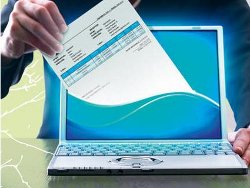 There are millions of invoices exchanged between suppliers and buyers in the supply chain every year. Most small businesses transit these invoices either in paper formats which end up causing inadequacies for the buyer’s Accounts Payable (AP) organization. This leads to an increase of the Days Sales Outstanding (DSO) for the involved supplier which results from mail floats. In other words, the days that an invoice takes to get to the buyer’s AP team from the supplier are increased.
There are millions of invoices exchanged between suppliers and buyers in the supply chain every year. Most small businesses transit these invoices either in paper formats which end up causing inadequacies for the buyer’s Accounts Payable (AP) organization. This leads to an increase of the Days Sales Outstanding (DSO) for the involved supplier which results from mail floats. In other words, the days that an invoice takes to get to the buyer’s AP team from the supplier are increased.
If suppliers can embrace the idea of using electronic invoicing in their operations they can realize considerable cost savings. Currently, there are quite a number of companies that offer such business processing solutions that can benefit your organization impeccably. Furthermore, when suppliers use the electronic systems to submit invoices or even pay their taxes, they can easily avoid errors with the buyer’s AP team and get paid faster. Buyers will also experience improved efficiency in their transactions as compared to receiving invoices in paper or email formats. Here are some of the benefits of using the electronic invoicing technology.
Capturing Digital Invoices
When invoices are submitted through paper formats they incur unnecessary costs and errors in the AP process. If the mails are submitted and received through emails, they’ll have to be scanned, sorted routed and opened before being keyed into the AP system. When there is no any imaging data extraction system in place, the documents received through e-mail have to be saved and printed and keyed.
Authenticating Automated Invoices
Many AP processes perform various authentications on the received invoices before the organizations can process and approve payments. Some of the authentications that they conduct include but not limited to ensuring that the supplier is legitimate and has an appropriate PO information, vendor name, and matching figures. Therefore, instead of complex data entry processes and manual validations, AP teams can utilize anchor links, business process management (BPM), and data capture technologies that are automated in performing such validations.
Convenience
Suppliers don’t have to wait for checks from the postman once their invoices go out to the mail, or even queue at the bank to deposit the daily checks. It’s very convenient to get it all done conveniently with the click of a button. It’s simpler to process multiple invoices electronically as compared to preparing a single paper invoice manually. It also translates to lesser paper cuts. Cutting costs and avoiding wasting time processing paper invoices is one of the biggest advantages of embracing electronic invoices. Storing of the soft copy invoices is much easier than the massive paper invoices that can be quite inaccessible for reference whenever necessary. Moreover, the paper invoices can create a lot of clutter in the workplace than the electronic invoices that don’t require complex filing.
Vendor Self-Service
Staffing call centers or contact centers responsible for responding to vendor inquiries about payments once invoices have been processed and sent is a costly affair. The amount of time spent researching the status of the invoices and following up on the invoices submitted to buyers can be avoided once a supplier embraces electronic invoicing technology. The electronic invoices encourage vendor self-service systems.




